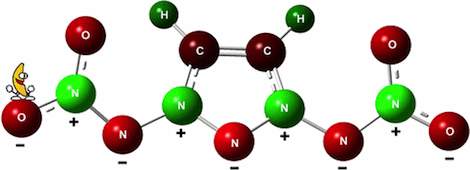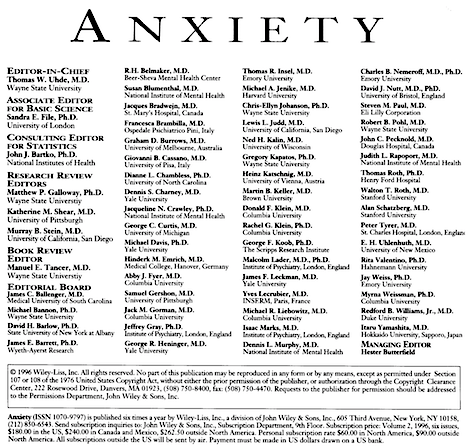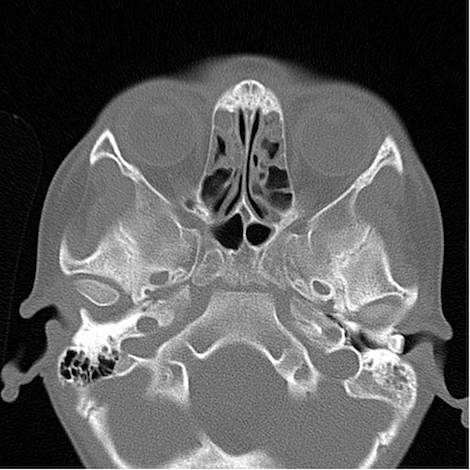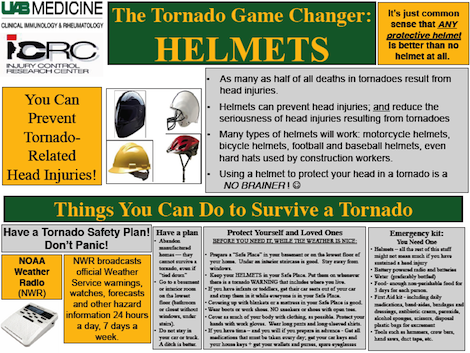Marc Abrahams's Blog, page 528
December 17, 2012
Unexpected appearance of a banana in a chemical structure
This study introduces a banana into the diagram of a chemical structure:
“1,3-Bis(nitroimido)-1,2,3-triazolate Anion, the N-Nitroimide Moiety, and the Strategy of Alternating Positive and Negative Charges in the Design of Energetic Materials,” Thomas M. Klapötke, Christian Petermayer, Davin G. Piercey, and Jörg Stierstorfer, Journal of the American Chemical Society, epub November 28, 2012. The authors, at Ludwig-Maximilian University of Munich, Germany and at the University of Maryland, USA, offer this structural diagram:

(Thanks to investigator Mary Beckman for bringing this to our attention.)
BONUS (unrelated): Why a banana? Why a duck?

December 16, 2012
Xmas code crackers
The ‘Santa Claus Problem’ (outlined above) was first described by Professor John A. Trono, (of Saint Michael’s College, VT, US) in his paper ‘A new exercise in concurrency’, SIGCSE Bulletin, Vol. 26, pp. 8-10, 1994. Despite its apparent first-glance simplicity, the problem presents robust concurrent programming complexities when using ‘traditional’ computer programming languages such as C (circa 1970) . Encouraging others like, for example, Mordechai Ben-Ari of the Weizmann Institute of Science, Israel, to try tackling the problem using more modern languages such as Ada (circa 1980 ) and Java (circa 1995). See: M. Ben-Ari. How to solve the santa claus problem. Concurrency: Practice & Experience, 10(6):485–496, 1998.
Although Ben-Ari’s methods provided an apparent improvement, if one takes the approach that shorter, simpler algorithmic solutions are more elegant, one might instead plump for the resources of an even newer programming language like Polyphonic C# designed and implemented (circa 2002) by Nick Benton, Luca Cardelli and Cédric Fournet of Microsoft Research, Cambridge, UK.
By way of a demonstration, Dr. Nick Benton, who is now a Senior Researcher at Microsoft Research in Cambridge constructed a new algorithmic solution. His (as yet unpublished) paper Jingle Bells: Solving the Santa Claus Problem in Polyphonic C# not only outlines possible pitfalls for programmers :
“The errors which are easy to make in an attempt to solve this problem include extra elves being able to sneak into a group once Santa has started showing elves into his office, or Santa being able to go off delivering toys whilst the reindeer are still waiting in the stable.”
but goes on to provide a polyphonic C# solution – and points out that :
“This provides another small piece of evidence that Join calculus-based concurrency primitives, as well as being a good basis for distributed computation, are a very attractive choice for solving traditional concurrency problems.”

An alarming cherry — further food-derived medical terms

Cherries – Image from Wikimedia Commons
We have looked at the strawberry as a food-derived medical term. Today: the cherry. First, savor this article with an alarming title:
Diaz K, Malave A. “Cherry Red Emergency”: Acute Epiglottitis Requiring Surgical Airway, Chest, 2012; 142 (4_MeetingAbstracts), 12A-12A.
Here is more information elaborating on the cherry red epiglottis (a flap of tissue at the tongue’s back that helps ensure food doesn’t go the wrong way into the airway when swallowing – a potential disaster).
While still nibbling on the above, consider the cherry red spot and cherry red discoloration.
BONUS: Info about actual cherries.

December 15, 2012
Anxiety—the research journal for those anxious about anxiety
The research journal named Anxiety may have been the most deliciously scary-named research journal in existence. Alas, the publishers changed the journal’s name, long ago, to the more tepid Depression and Anxiety. Here is a look at the journal’s masthead as it was in the good old days before the name change:

Constipation on two levels (tortoise and journal), both relieved
Comes twofold news of constipation relief:
“Alleviation of a gastrointestinal tract impaction in a tortoise using an improvised vibrating massager,” Emma Nicholas and Clifford Warwick, Journal of Herpetological Medicine and Surgery, Volume 21, Issue 4, 2011. A press release issued by the Animal Protection Agency gives details:
“On arrival at the vets in Barons Court, London, the poorly tortoise was very weak and its head was withdrawn, probably due to pain. However, after a twice-a-day treatment for several weeks with the vibrator, the tortoise came out of its shell and is now strong and healthy. This novel treatment has been published by the Journal of Herpetological Medicine and Surgery, and is now also being used to help other animals such as constipated dogs…. (Although dated 2011, this latest issue was published last week as the journal is a year behind schedule).”
(Thanks to investigators Alec Batchelor and James Harkin for bringing this to our attention.)

Looking: A Gift Tooth in the Ear
The BMJ has again given its cheeriest gift to the world — the annual Christmas issue packed with improbable medical specimens. Here’s one of this year’s most toothsome reports:
“The Tooth Fairy and Malpractice,” Sian Ludman [pictured here], Hamid Daya, Polly S Richards and Adam Fox, BMJ, 2012; 345. The authors write:
“The family spoke of an occasion three years earlier when the boy had woken from sleep, extremely distressed because the tooth fairy had put a tooth in his left ear. The tooth had initially been left under his pillow for the tooth fairy to collect and to leave some money in its place. Thinking this was a bad dream, the parents initially reassured the boy but were unable to locate the tooth. Nevertheless, his concerns continued, and on two occasions advice was sought from different general practitioners, when the auroscopy was thought to be normal. Repeat auroscopy by the allergist confirmed the presence of a deciduous tooth in the auditory canal. The tooth was removed by an ENT surgeon under microscopic vision, and the patient decided to keep the tooth for posterity.”
The article includes this image: an “axial computed tomogram of the patient’s paranasal sinuses showing a hyperdense structure in the left external auditory meatus”:
(Thanks to investigator James Harkin for bringing this to our attention.)

December 14, 2012
A ninefold typology of Beatles please-please analysts
In an experiment, three groups of music students transcribed the first 64 seconds of The Beatles’ Please please me.
Analysis of these transcriptions yielded a ninefold typology of polylinear listeners: holistic melodists, holistic formalists, impressionists, melodic conventionalists, semiprofessional generalists, nonmelodic semiprofessional generalists, nonprofessional melodic generalists, semiprofessional rhythmicians, and holistic graphicians.
This according to “Dynamics of polylinearity in popular music: Perception and apperception of 64 seconds of Please please me (1963)” by Tomi Mäkelä, an article published in Beatlestudies. III: Proceedings of the Beatles 2000 Conference(Jyväskylä: Jyväskylän Yliopisto, 2001, pp. 129–38).
BONUS: The recording studied by those scholars:
BONUS: A review of Beatlestudies III.

Improbable on Science Friday today: upside-down vision
 I’m going to be on NPR’s Science Friday program today. We’ll talk about the series of experiments that forced people to see the world upside down, left-right reversed, and other unusual ways.
I’m going to be on NPR’s Science Friday program today. We’ll talk about the series of experiments that forced people to see the world upside down, left-right reversed, and other unusual ways.
This segment will be at the start of hour 2 of the program.
Here’s film from that experiment:

December 13, 2012
Festive Headgear in Organizational Contexts
 For the first time, a scholarly study has investigated the effects (in an organizational context) of not just one – but four – types of festive headgear.
For the first time, a scholarly study has investigated the effects (in an organizational context) of not just one – but four – types of festive headgear.
Dr. Ann Rippin who is a senior lecturer at the University of Bristol, UK, in the Department of Management, authored a paper for the journal Organization in 2011.
“The article examines the wearing of festive headgear as a way of understanding contemporary organizational rituals, pointing to analogous historical practice, which reveals the way that power is deployed while seeming to be relaxed. […] The headgear I shall consider includes paper crowns, Father Christmas hats, tinsel halos and reindeer antlers.”
Although centred around what would many would consider to be a light-hearted subject area, the study hints at darker sides of the festive office party :
“The paper crown in particular offers a more poignant reading of the assigning of power roles in organizations. Its ‘forced’ wearing represents in its temporary status a cruelly parodic offering of the possibility of different hierarchy and authority structures.”
see: Ritualized Christmas headgear or ‘Pass me the tinsel, mother: it’s the office party tonight’ (Organization, vol. 18, no. 6 )
NOTE: The photo is courtesy of the Plymouth Fancy Dress Company, UK, who are in a position to supply festive antlers for £4.75

What They Recommend: Safety Helmets for Tornados
How can you protect yourself against a tornado? Two different medical groups suggest that you might try putting a safety helmet on your head, because that might be better than not putting a safety helmet on your head, maybe. Early this year came the treatise:
“Safety Helmets: A Practical, Inexpensive Solution for Reducing the Risk of Head Injuries Resulting from Tornadoes,” M. Scott Crawford, Philip R. Fine, P. Jeff Foster, John W. Waterbor, Gregory G. Davis & Robert M. Brissie, University of Alabama Birmingham Injury Control Research Center, The University of Alabama at Birmingham, January 12, 2012. The authors explain:
“The CDC’s Emergency Prevention and Response website, as part of its “During a Tornado” safety tips webpage, instructs individuals to “protect your head with anything available—even your hands” and seek shelter in a low-lying, windowless area, such as a basement or other structurally sound part of a building, unless the residence is a mobile home, in which case the occupants should vacate. In our opinion, this website statement is unacceptably vague…
“Instead, workers at the University of Alabama at Birmingham’s Injury Control Research Center (UAB ICRC) are proposing the use of ‘safety helmets’ by individuals at risk for being in the path of a tornado….
“A safety helmet can be any structurally sound helmet, such as a motorcycle helmet, football helmet, baseball helmet, bicycle helmet, skateboard helmet, or even a construction hardhat, as long as the helmet’s original intended purpose is to minimize anatomical damage sustained as a result of high-velocity impacts.”
A poster, reproduced below in miniature, gives further detail. (Thanks to investigator James Harkin for bringing both the treatise and the poster to our attention.)
An even more recent treatise reports evidence that safety helmets may just possibly, perhaps, have played a role and maybe even had a, well, impact on the safety of three of the many children who survived tornados:
“Prevention of Child Injuries During Tornadoes: Cases From the 2011 Tornado Outbreak in Alabama,” Christine M. Campbell, Mark D. Baker, Kathy W. Monroe, Pediatric Emergency Care, vol. 28, no. 12, December 2012, pp. 1389–90. The authors report:
“Methods: Records from 60 patients seen in a pediatric emergency department for tornado-related injuries were reviewed to identify the use of injury prevention devices.
Results: Three children directly exposed to a violent tornado (Enhanced Fujita Scale 4) were using safety equipment, specifically, a helmet and infant car seats. These 3 children sustained only minor injuries.
Conclusions: Personal protective devices may have played a role in preventing child injuries from tornadoes. To our knowledge, this is the first report in the medical literature on helmet and infant car seat use as child protective devices during tornadoes.”

Marc Abrahams's Blog
- Marc Abrahams's profile
- 14 followers







